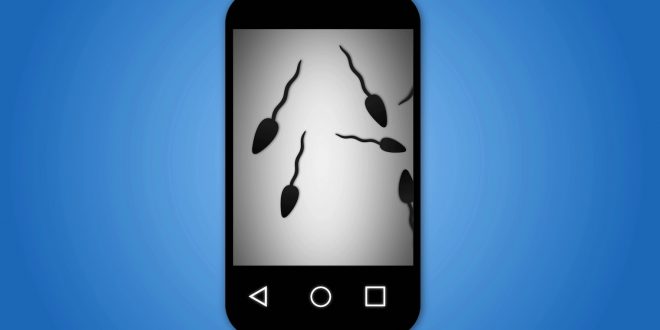Scientists from Harvard Medical School and Brigham and Women’s Hospital have developed an inexpensive and discrete way of screening for male infertility by creating an app that could be used with a few phone accessories.
“When men go through the process it’s always an awkward experience,” Hadi Shafiee, one of the researchers and an assistant professor at Harvard Medical School, tells Inverse. “To provide that sample when there’s pressure, and there’s stigma and embarrassment. We wanted to come up with a technology so this can be done at home.”
It costs $4.45 to produce, provides 98-percent accurate results, and requires no formal training to read. The research was published online Wednesday at Science Translational Medicine.
According to Shafiee, a principal investigator in the research, more than one in ten men experiences some form of infertility. Yet even though men are at least as likely as women to contribute to difficulty conceiving, it’s usually women who undergo the time-consuming and expensive process of fertility testing.
Here’s how it works: Once a man dutifully provides his sample, he loads it onto a disposable microchip surface that comes with the test kit. An optical device that attaches to any standard-issue smartphone uses the camera and processing power to analyze the semen. Results can be ready in less than five seconds.
In addition to men trying to start a family, the attachment is good news for the post-vasectomy crowd, who must return to their doctors regularly for semen analysis to make sure everything’s staying put. But there’s poor compliance, which is a pain for urologists as well, since they inevitably get sued when their patients don’t show and proceed to make surprise babies.
Soon, the 500,000 men who get vasectomies each year will be able to perform the test every three months themselves, at home, and simply share the results with their doctor over the cloud. The technology hasn’t been developed for women, but Shafiee says he could see it being a possibility. It might also prove a valuable diagnostic tool for men in developing countries with limited access to reproductive care.
Another big potential market lies in sperm donation. Shafiee says he’s already been talking to one donor bank that performs up to 50,000 semen analyses per year, and is understandably excited to be able to provide a low-cost device that enables users to test themselves at home and make a decision about donating once it’s complete. We could be looking at widely available commercial tests in just a couple of years.
“Right now we’re in the process of fundraising,” Shafiee says. “When we have enough — basically up to $5 million — and then have the FDA approvals, I would imagine we would have [this on the market] in less than 24 months.”
Male infertility affects up to 12% of the world’s male population and is linked to various environmental and medical conditions. Manual microscope-based testing and computer-assisted semen analysis (CASA) are the current standard methods to diagnose male infertility, however, these methods are labor-intensive, expensive, and laboratory-based. Cultural and socially dominated stigma against male infertility testing hinders a large number of men from getting tested for infertility, especially in resource-limited African countries. Here, we describe the development and clinical testing of an automated smartphone-based semen analyzer designed for quantitative measurement of sperm concentration and motility for point-of-care male infertility screening. Using a total of 350 clinical semen specimens at a fertility clinic, we have shown that our assay can analyze an unwashed, unprocessed liquefied semen sample with <5 seconds mean processing time and provide the user a semen quality evaluation based on the World Health Organization (WHO) guidelines with ~98% accuracy. The work suggests that the integration of microfluidics, optical sensing accessories, and advances in consumer electronics, particularly smartphone capabilities, can make remote semen quality testing accessible to people in both developed and developing countries who have access to smartphones.
Agencies/Canadajournal
 Canada Journal – News of the World Articles and videos to bring you the biggest Canadian news stories from across the country every day
Canada Journal – News of the World Articles and videos to bring you the biggest Canadian news stories from across the country every day



